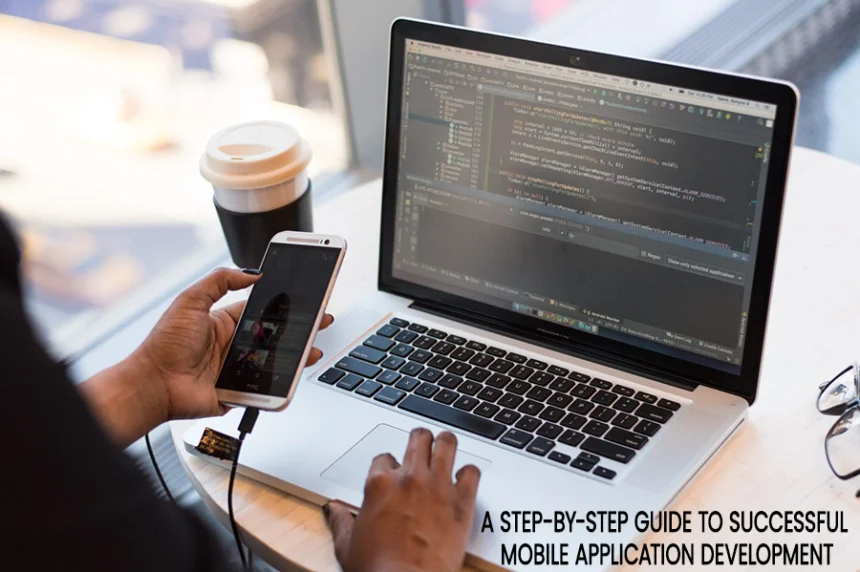Mobile apps have taken over the digital world! However, mobile application development isn’t a walk in the park. It’s way more confusing and technical than it sounds.
But if you aim to start your app journey, then knowing the process is crucial. And that’s what we’re going to do! Here, we’ll take you through the essential steps for successful app development. So, without any further ado, Let’s get going!
Step 1: The Spark – Defining Your Idea
Firstly, every app begins with an idea. What do you want to offer? Are you trying to solve any societal problem? Think about that. This way, millions of ideas pop up and then the best one is chosen for mobile application development.
So, if are you jumping into mobile application development without clarity on the “why,”? Then, it’s like throwing spaghetti at the wall and hoping something sticks.
Pro Tip: Be specific. Are you building a productivity app for remote workers? Or is it a game for casual gamers? Knowing your target audience from the get-go will save you a ton of headaches later on.
Step 2: Research – Know the Market, Know the Competition
Secondly, let’s dive into the research phase. This is where you become a detective. Basically, you gotta snoop around to see what your competitors are up to. But don’t worry! It’s all legal stuff. You just need to know
- Who’s already in the game
- What they’re doing well
- where they’re messing up
This will help you figure out how crowded the market is. Plus, you’ll see what specialty your app can offer.
Bonus tip: Don’t just look at apps in the same niche as yours. In fact, check out the reviews too. User complaints are like treasure maps. That will lead you to understand what the public wants. And what loopholes others have forgotten?
Step 3: Wireframe – Mapping Out Your Blueprint
Wireframing is like creating the basics of your mobile application development process. Basically, this is where you’ll outline the
- User interface (UI)
- User experience (UX)
Want it the easy way? So, think of it like drawing a blueprint before building a house. Do you just start throwing up walls? No, in fact, you plan where everything goes so it’s functional and looks good. The same goes for wireframes. It provides a clear visual guide for your development team. Ultimately, this ensures everyone’s on the same page.
Pro Tip: Simplicity is the ultimate sophistication. Your users don’t want to navigate a maze. The more accessible the design, the better the user experience.
Step 4: Design – Bringing Your Application to Life
Next, this is the most fun part. Designing! In this step of your mobile application development, you transform your wireframe now into a visual masterpiece with
- Colors
- Fonts
- Icons
- Other aesthetic elements
This is where your app gets its personality. Will it have a sleek, minimalistic feel? Or are you going for something more bold and vibrant? Moreover, during the design phase, it’s crucial to ensure that the app is user-friendly. Remember, users are ruthless. So, if they can’t navigate your app in the first 30 seconds, they’re uninstalling.
Pro Tip: Test your design on different screen sizes and resolutions. This will ensure it looks good across all devices.
Step 6: Launch – Hitting the App Stores
This is where the real magic happens. Are you into coding? That’s even better for you! In this stage, your app’s designs become a reality. Plus, all the features you’ve dreamed of have started to work.
There are two main ways to build mobile apps:
- Native apps (made for just one platform like iOS or Android)
- Cross-platform apps (that can run on both platforms)
Now, which one you choose depends on your budget. Also, who do you want to use your app? And how complicated is it to build?
Pro Tip: Be careful when choosing a development framework. Are you going for React Native? Flutter? Or maybe Swift. These are all popular options. So, make sure you talk to your developers a lot to avoid any problems.
Step 7: Post-Launch – Updates, Feedback, and Maintenance
Lastly, your app is finally out there! However, remember, this isn’t the end of the story. The real work starts now. Once users get their hands on your app, you’ll hear a lot of feedback. Some might be good, some bad, and sometimes downright harsh. But don’t take it to heart. Instead, treat it as an opportunity to better your app. Keep updating your app based on what users say.
Also, don’t forget about maintenance. You need to update your app regularly with
- New features
- Security patches
- Performance improvements
This will ensure it operates efficiently and securely.
Bonus Tip: Have a plan for future updates. Users love to see that you’re still working hard to make your app better. It shows them you care.
Final Thoughts
Mobile application development is a journey. It requires you to do careful planning, creativity, and tech skills. If you just go step by step with this guide, you’re on the right track!
Basically, you’ll be able to create an app that not only functions well but also stands out. So, remember, the key to success is combining great design with solid functionality.
Now, step out and bring your next big idea to life! (And maybe, just maybe, we’ll all have it on our phones soon.)
GOOD LUCK!







